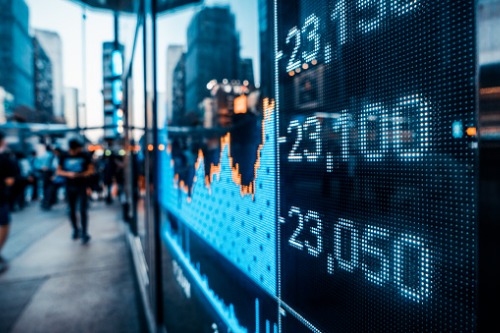Moves in long-bond prices and yields suggest a disproportionate degree of investor panic

With the rise of volatility, trade tensions, and prospects of a recession, investors are putting more of their portfolio assets in bonds. But such fixed-income securities may have drifted away from fulfilling their traditional function.
“Bonds are now just as good a place to be [as equities] if you like to bet on big price moves,” wrote Wall Street Journal columnist James Mackintosh.
He focused on the global rush for the longest-dated funds, which has led to the 30-year Treasury yield getting pulled below 2% for the first time ever on Thursday. The price of that bond, he said, has soared, generating a return of more than 20%; prior to that going back to the 1980s, that had happened only during the financial collapse in late 2008 and 2011’s US credit rating downgrade-plus-Eurozone crisis.
Other countries are also posting very low yields on their own super-long bonds. Mackintosh noted sub-inflation yields across different countries’ long-term securities, including the -0.22% for Germany’s 30-year bond; 0.19% for Japan’s 40-year; 0.94% for Britain’s 50-year; and 1.1% for Austria’s century bond. Holding such bonds to maturity, he maintained, would not make sense unless investors were convinced of a decades-long scenario of extremely low interest rates and no inflation, and that governments won’t respond by borrowing and spending.
“For the moment, these bonds are huge winners—even more so overseas, where lower yields and longer maturities accentuate price moves,” he wrote. “Over both five and 10 years there have been as many days where the three-month gain or loss was more than 15% in the 30-year bond as in U.S. stocks (assuming coupons and dividends are reinvested).”
While part of the new price-swing trend is to be expected — the lower the yield, the more sensitive bond prices are to incremental changes in yield — Mackintosh argued that the recent moves in bonds strongly suggest panic. Worries abound over a weakening global economy, the escalating trade dispute between the U.S. and China, growing prospects of a Cold War, and central banks’ failed efforts at boosting inflation. Investors are also getting spooked by political troubles in India, Hong Kong, and the U.K.
“Moves of this scale usually only come when the imagined outcomes are terrible,” he said, referring to 2011 when a U.S. default was in the cards and in 2008 when major banks were failing. In those cases, bonds were the lesser evil: investors might lose money after inflation from being exposed to them, but equities would fall even further.
During those times, fears eventually dissipated as central banks stepped in, giving way to a harsh selloff in long bonds. In contrast, investors today are facing an imagined future that isn’t so bad — a recession rather than a total collapse in currencies or financial markets. But with less room to cut interest rates and U.S. President Donald Trump’s antipathy toward China and objections to lower European interest rates, central banks appear less able to help than they were before.
“To me, it looks as though the panic is overdone,” Mackintosh said, arguing that the market has moved too quickly, and is therefore likely to snap back with any hint of good news. “There may be money to be made by buying long bonds if bad stuff keeps happening. But buying bonds at such stupidly high prices and low yields isn’t a way to keep your investment safe.”



